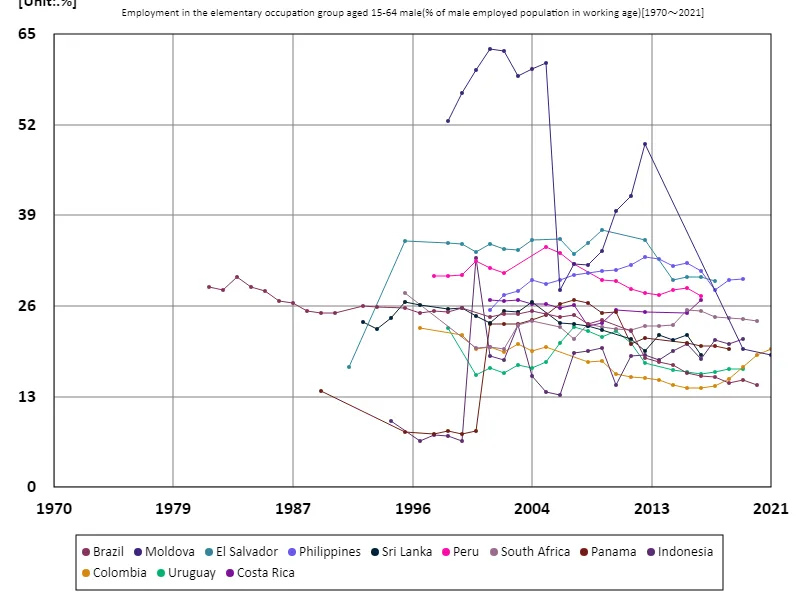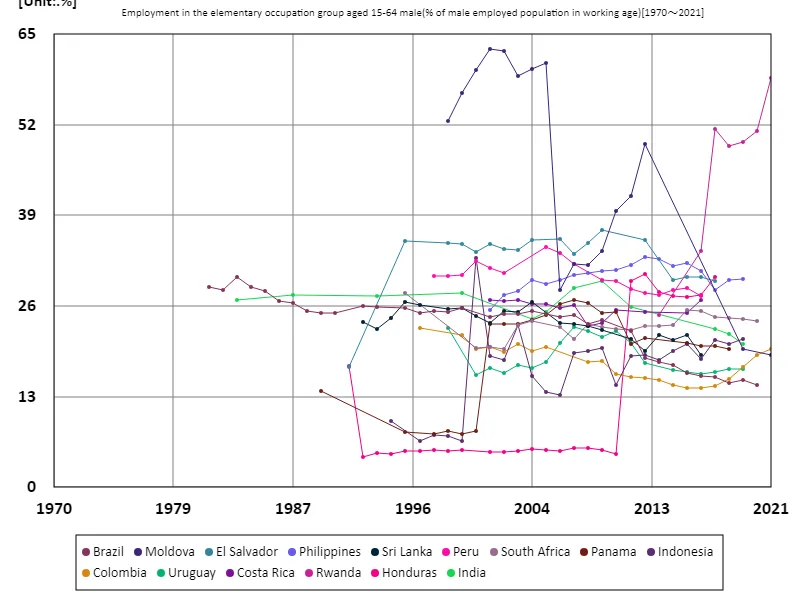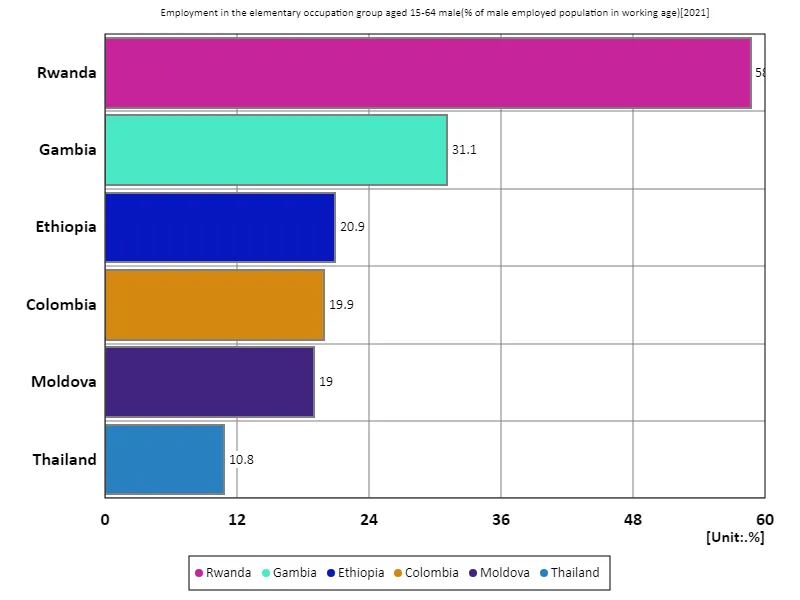- Abstract
- Employment rate for men aged 15-64 in the primary occupational sector (percentage of working-age males in the workforce)
- Employment rate of men aged 15-64 in the primary occupational sector (percentage of working-age males in the labour force) (Worldwide)
- Employment rate of primary occupational sector men aged 15-64 (percentage of working-age males in the labour force) (world, latest year)
- Reference
Abstract
Based on that data, Colombia has the highest employment rate in the primary occupational sector for men aged 15-64, at 19.9%. This high employment rate likely reflects the country’s economic structure and labor market characteristics. In Colombia, primary industries such as agriculture and mining play an important role, and a large workforce is employed in these sectors, which is likely why employment in the primary vocational sector is high. In contrast, in developed countries, the service and industrial sectors dominate, and employment rates in the primary occupational sector tend to be relatively low. Overall, the Colombian data can be seen as an example of the importance of primary industries in developing countries and the specific economic context of the region.
Employment rate for men aged 15-64 in the primary occupational sector (percentage of working-age males in the workforce)
The employment rate in the primary occupational sector for men aged 15-64 in Moldova peaked at 62.9% in 2001 and declined to 30.2% in 2021, suggesting major changes in the structure of the economy. From the 1980s to the early 2000s, Moldova was in a post-Soviet transitional economy and saw high employment rates, with agriculture and primary industries being the main sources of employment. However, in recent years, as the economy has diversified and the service and industrial sectors have grown, the relative employment rate in the primary vocational sector has declined. This change is common during economic growth in developing countries and reflects a transition from primary to higher value-added industries. Additionally, changes in the international labor market and increases in domestic and foreign investment are also likely to be affecting the employment structure. The case of Moldova is one example that shows the qualitative changes in employment that accompany economic development.


The maximum is 62.9%[2001] of Moldova, and the current value is about 30.2%
Employment rate of men aged 15-64 in the primary occupational sector (percentage of working-age males in the labour force) (Worldwide)
The employment rate in the primary occupational sector for men aged 15-64 in Moldova has declined to 30.2% in 2021 after reaching a high peak of 62.9% in 2001. This significant decline indicates a change in Moldova’s economic structure. In the early 2000s, agriculture and primary industries were the main sources of employment, and the region was characterized by extensive farmland and low-wage labor. However, economic transformation and increasing globalization are gradually shifting Moldova towards growth in the services and industrial sectors. This has naturally led to a decline in employment rates in the primary vocational sector. In addition, the influx of migrant workers from both within and outside the country and the modernization of the labor market are also likely to have had an impact. Such changes are common in the economic development of developing countries and reflect the increase in higher value-added jobs while the relative importance of traditional primary occupations declines.


The maximum is 62.9%[2001] of Moldova, and the current value is about 30.2%
Employment rate of primary occupational sector men aged 15-64 (percentage of working-age males in the labour force) (world, latest year)
Data for 2021 shows that Rwanda has the highest employment rate in the primary occupational sector for men aged 15-64 at 58.7%, compared to an average of 26.7% and an overall total of 160%. Rwanda’s high primary occupational sector employment rate indicates that agriculture remains central to the economy and that a wide range of primary occupations remains the main source of employment. In developing countries, employment rates tend to be high in the primary vocational sector, with basic industries such as agriculture and mining absorbing a large proportion of the labour force. On the other hand, the overall total of 160% suggests that working in multiple occupations is common. Particularly in developing countries, side jobs and having multiple sources of income are common. This trend may reflect labor market instability or economic hardship. The global average of 26.7% also reflects the fact that in developed and economically developed countries, the employment rate in the primary vocational sector is relatively low, with the service and industrial sectors being the main sources of employment. This has resulted in a tendency for employment rates in the primary vocational sector to decline as the economy develops. Overall, the data reflects employment transitions according to stages of economic development.


The maximum is 58.7% of Rwanda, the average is 26.7%, and the total is 160%



Comments